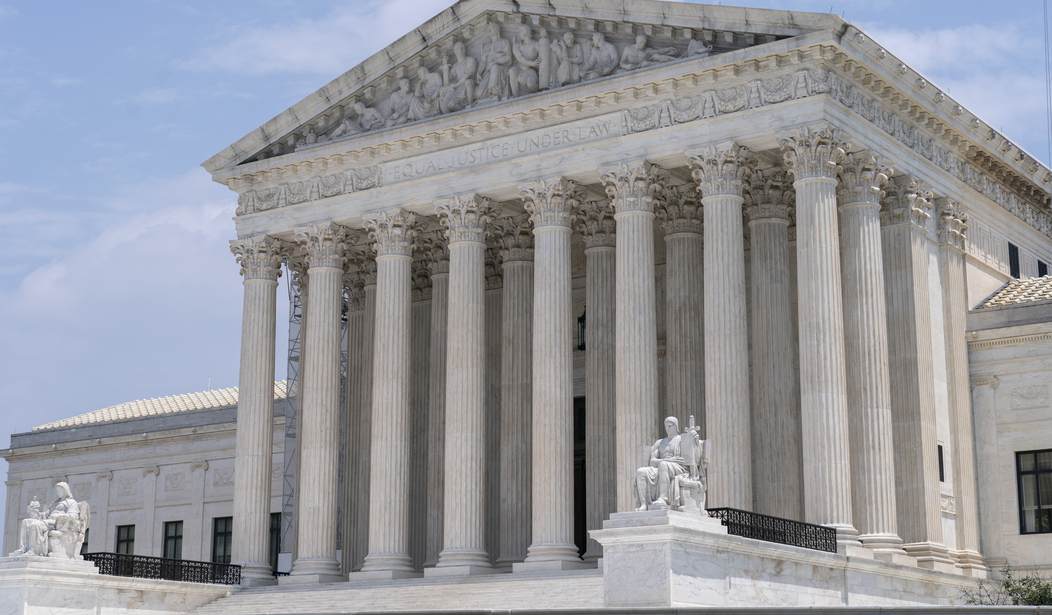Merrick Garland can ask, but I suspect he’s not going to like the answer.
The ATF’s rule designating incomplete frames and receivers, as well as DIY gun making kits, as “firearms” is on hold nationwide thanks to U.S. District Court Judge Reed O’Connor’s injunction handed down earlier this year. The Fifth Circuit Court of Appeals refused to stay his order just a few days ago, and now the DOJ is seeking relief from the Supreme Court.
President Joe Biden’s administration on Thursday asked the U.S. Supreme Court to reinstate a regulation aimed at reining in so-called ghost guns, or privately made firearms that are difficult for law enforcement to trace, after it was struck down by a lower court.
The administration asked the justices to halt a Texas-based federal judge’s nationwide ruling that invalidated a Justice Department restriction on the sale of ghost gun kits while the administration appeals to the New Orleans-based 5th U.S. Circuit Court of Appeals.
… The administration warned the justices that allowing the judge’s ruling to stand would enable an “irreversible flow of large numbers of untraceable ghost guns into our nation’s communities.”
Oh please. Criminals by their very nature aren’t going to concern themselves with the legal status of their weapons. Fentanyl is prohibited by federal law, but that hasn’t stopped an “irreversible flow” of the illegal narcotic into our nation’s communities. More than 2/3rds of the over 100,000 drug overdose deaths last year involved fentanyl according to the CDC, and the numbers have only been growing in recent years.
Trying to combat crime by reducing the number of firearms in circulation in this country is a lost cause, to be honest. There are more than 400-million privately owned firearms in the United States, and technology has progressed to the point that it’s possible to make a fully functional firearm with nothing more than a 3D printer and a trip to you local hardware store. The only substantive way to address “gun violence” is to reduce the demand for firearms among those most likely to use them in the commission of a crime, and the best way to do that is to go after trigger-pullers with a vigor simply not seen in the Department of Justice.
Ultimately, though, this isn’t an argument about the best policy to reduce violent crime. It’s about the ATF’s lack of authority to rewrite laws passed by Congress, and both O’Connor and the Fifth Circuit have preliminarily concluded that the agency overstepped its bounds in re-defining what a firearm is.
So what will the Supreme Court do? My guess is “nothing”, at least in the immediate future. SCOTUS is on summer break, and that will likely lead to at least a slight delay in any response from the Court, but that’s not the only challenge facing Garland and DOJ. The justice assigned to hear emergency appeals coming out of the Fifth Circuit is Samuel Alito, who’s been one of the strongest supporters of the right to keep and bear arms on the bench over the past few years. It’s true that Alito did grant an administrative stay of a Fifth Circuit decision blocking access to the abortion medication mifepristone earlier this year, but that decision kept the status quo in place. In the case of the ATF’s rule on frames and receiver, the agency is undoing decades of previous rule-making, and violations of the ATF’s new reading of when a gun becomes a “firearm” can result in criminal charges against an untold number of lawful citizens.
My hunch (and hope) is that Alito turns down the DOJ’s request outright without referring it to the entire Court for review, but if he does kick DOJ’s request to the full Court it could be September before Garland gets an answer. For the moment, the ATF’s rule remains on hold. Fingers crossed it stays that way.








Join the conversation as a VIP Member